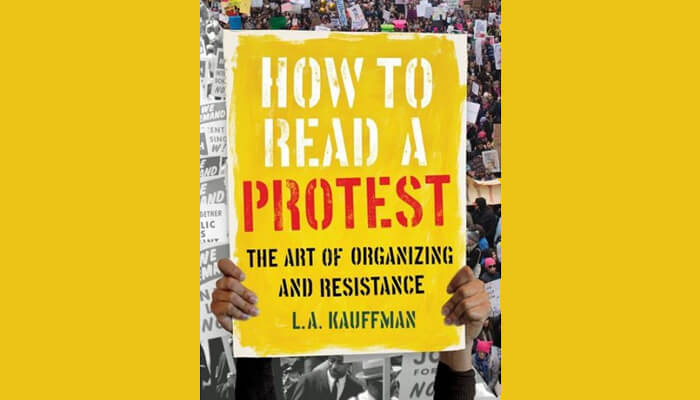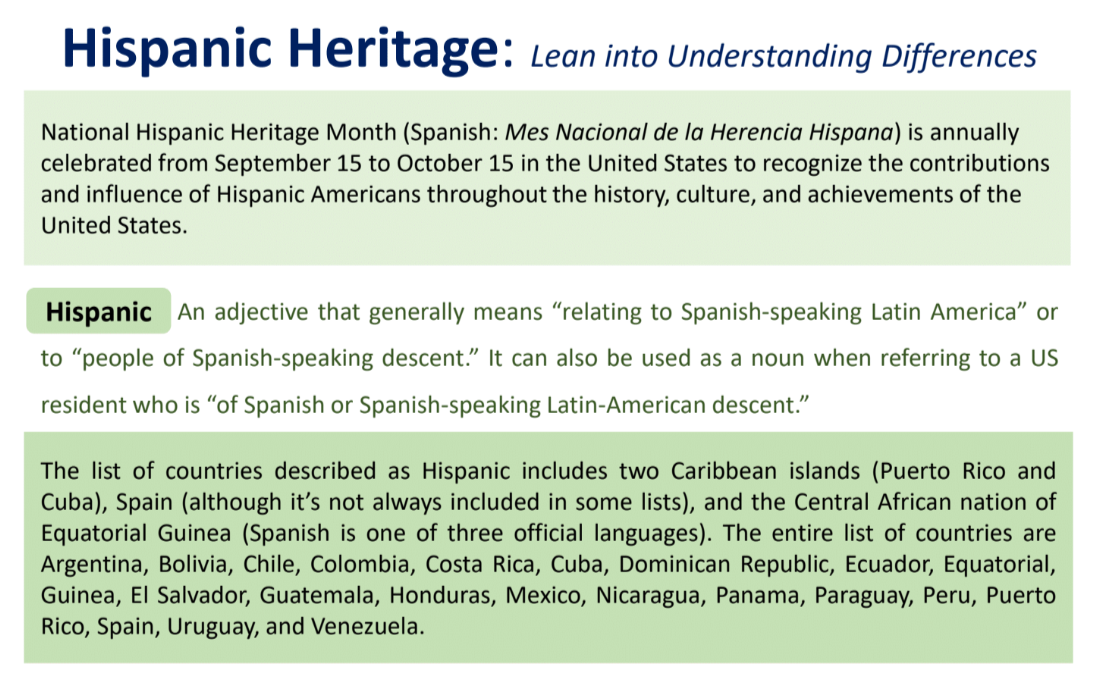The 2018 midterms will be decided by women, millions of whom have marched since Trump took office, with many going on to phone-bank, canvass, and organize in thousands of small groups independent of the Democratic party. The anger and energy of this grassroots resistance will have major implications for the midterm elections and beyond. In her new book HOW TO READ A PROTEST: THE ART OF ORGANIZING AND RESISTANCE (UC Press; October 30, 2018), veteran organizer, activist, and journalist, L.A. Kauffman (she was the mobilizing coordinator of the massive 2003-4 protests against the Iraq War, some of the largest in U.S. history) illuminates what makes this wave of protest and organizing different from past movements in America. Shedding new light on how and when protests work, she contextualizes the recent wave of grassroots dissent with a close examination of mass demonstrations in America, starting with the 1963 March on Washington, which was top-down and organized by men, and ending with the 2017 Women’s Marches, which were driven by a bottom-up surge of organizing by women outraged by Trump and the Republican Party.
Would you like to see a copy of the book? Kauffman, who also wroteDIRECT ACTION: PROTEST AND THE REINVENTION OF AMERICAN RADICALISM (Verso), is available for interview.
Here’s a recent Guardian piece that sparked conversation: The Republican Party is About to Face the Wrath of Women.
Much more information, including a Q&A, is below. Thanks for considering for review or interview.
Very best,
Liv Walton
ABOUT THE AUTHOR
L.A. Kauffman has been a grassroots organizer for more than thirty years and served as the mobilizing coordinator for the massive Iraq antiwar protests of 2003-2004. She has covered social movement history and activism for The Guardian, n+1, and numerous other publications and is the author of Direct Action: Protest and the Reinvention of American Radicalism. She is deeply involved in a wide array of efforts to counter the Trump presidency; she was, for instance, a tactical coordinator for a major women’s direct action against family separations on Capitol Hill in June 2018, which was the largest women’s civil disobedience in U.S. history.
ADVANCE PRAISE
“L.A. Kauffman is one of the people I look to most for the big picture about American activism—where it’s been, where it’s going, what works, who’s doing the work, and why. This swift-moving book revises and deepens and corrects what we know about past social movements in America and appraises what has made the women-led, grassroots resistance to Trump unlike any movement that came before. The next chapter is something we will all write together if and when we rise to the promise and the legacy of the radical past that Kauffman so ably describes.”—Rebecca Solnit, author of Hope in the Dark: Untold Histories, Wild Possibilities
“Kauffman’s new book offers critical historical analysis and strategic insights, raising provocative and complex questions about the relationship between protests and movement building. Every organizer and social movement historian should read it.”—Barbara Ransby, author of Making All Black Lives Matter: Reimagining Freedom in the Twenty-First Century
“How to Read a Protest is an incredible tool for understanding collective action: who is involved, how it unfolds, and what makes it successful, with special emphasis on the often-overlooked role of women in making movements and how ideas of organization and leadership have shifted. L.A. Kauffman helps us understand and interpret the reasons behind, and meanings of, protest in our time, giving us a valuable gift of insight and research.”—Marina Sitrin, coauthor of They Can’t Represent Us! Reinventing Democracy from Greece to Occupy
“L.A. Kauffman is a marvelous combination of mobilization-insider and historical commentator. No one else could bring so much fruitful commentary to bear on mass protests. The illustrations here are fascinating in themselves, wonderful to observe and ponder. This is a splendid and much-needed book.”—Paul Buhle, coeditor of theEncyclopedia of the American Left
A Q&A WITH L.A. KAUFFMAN
You note that we’re in a remarkable era of protest – you recently wrote in The Guardian that more Americans took part in protests during the first 15 months of the Trump presidency than at any time in U.S. history. What’s distinctive about this moment, and how does HOW TO READ A PROTEST help us understand it?
The scale of not just protest but organizing more generally under Trump has been enormous, and its character has been really striking. First off, it’s mostly women – woman have been a solid majority at the big protests, and when it comes to grassroots organizing, it’s often 70 to 80 percent women. The organizing is very bottom-up and decentralized, very multi-issue, and it’s everywhere – the total number of demonstrators has been so high in part because people have been protesting all over the country, in a record number of locations, and have formed a record number of local resistance groups. In the book, I look closely at the 1963 March on Washington and the 2017 Women’s Marches to explore how the nature of protest and organizing has shifted over time, explaining why the resistance to Trump has had this distinctive, decentralized and women-led character.
I wrote this book to help people understand what they’re seeing when they see protests unfold – even though demonstrations are remarkably widespread right now, few people have a sense of what’s involved in making a protest happen, what different forms they take, and how their character affects their impact. As I explore the two big mobilizations that frame the book, How to Read a Protest offers something of a primer in protest literacy, giving readers the analytical tools to interpret what’s really going on when crowds gather to march or rally.
Are protests effective?
They are – but not all in the same way, and not necessarily in the way people expect them to be. There are many different kinds of protests, from silent vigils to disruptive street blockades to mass marches, and they accomplish different things. We have this idea that protests have to work as short-term pressure tactics to be effective, an idea partly based on myths about the 1963 March on Washington, the famous event where Dr. King delivered his “I Have a Dream” speech and the first mass march in America. That march is widely seen as having led to the passage of the 1964 Civil Rights Act, and of course it helped, but the influence was relatively general and indirect. When the impact of that march is overstated and the event is elevated to myth, it has a way of diminishing all subsequent protests, obscuring the range of ways they can have significant effects. Sometimes that’s passing legislation or changing policy, but sometimes it’s putting an issue on the agenda or changing the terms of a political debate. Sometimes protests work by creating a crisis that decision-makers have to respond to, and sometimes they work by swaying public opinion. The Women’s Marches, I argue, did something that no previous mobilization has done in quite the same way: they galvanized a far-reaching new movement.
Can you tell us more about your experience as an organizer? How does your own background figure into this book?
I’ve been attending protests and immersed in grassroots movements for more than 35 years – my first big march was in 1982, when I was 17 years old. Over that time, I’ve been involved many different kinds of organizing, including playing a key role in the type of mass demonstrations I discuss in the book.
I was the mobilizing coordinator for the huge demonstrations against the Iraq War that took place in 2003 and 2004. My job was to get the crowds there, and the protests were indeed very large – one of them was part of what still stands as the largest day of protest in world history, and another ranks as one of the ten largest marches in American history. But these protests didn’t stop the war, and it was haunting to be part of something that was simultaneously so successful in scale and so questionable in impact. I never doubted that it was worth doing – it’s horrific that our government slaughtered so many on a blatantly false pretext, triggering so much bloodshed and chaos, and it was right to express outrage even if we couldn’t stop it from happening. But the experience certainly left me thinking about mass mobilizations and what they do and don’t accomplish, questions I returned to in a new way after attending the 2017 Women’s March in Washington.
You focus on the signs that people carry at protests as a way to explore how the nature of movements has changed – what led you to that approach?
When I went to the Women’s March, it immediately felt different than any big mobilization I’d been to before. There were many things about it that were distinctive, but one thing that stood out to me that day was the signage: what a high percentage of people had made and brought their own signs, how varied the slogans were, how many issues they addressed.
I knew that protests hadn’t always looked that way – at the 1963 March, for instance, all the signs pretty much looked alike – but it wasn’t until I started looking into the question more closely that I discovered something that startled me and plays a key role in the book. At the 1963 March, which stands as an enduring symbol of dissent in America, all the signs were controlled by the march leadership – you weren’t allowed to carry signs with slogans they hadn’t approved, and if you did, there were marshals who would surround you and take them away. This detail really upended my view of the march and raised a huge number of questions in my mind about this legendary event who nature I thought I understood. I knew what it was like to mobilize crowds on that scale, and I couldn’t imagine how they were able to exercise that level of control – or why they would want to.
Fortunately, there are rich archival materials for the 1963 March, including an amazing trove of interviews with the staff organizers that were conducted just four years after the march – famous figures like A. Philip Randolph and Bayard Rustin, but also lesser-known staffers who had done the kind of nuts-and-bolts work I knew about from my own organizing experience. The question of the signs turned out to be deeply intertwined with questions about gender, leadership, and movement building – questions that are deeply relevant to our moment and to understanding the resistance to Trump.
Your last book addressed direct action as a model of protest, whereasHow to Read a Protest focuses on mass marches and mobilizations. What’s the difference between these methods, and which is most effective?
Nonviolent direct action has typically been the leading edge of movements for change in the United States, and my first book told the story of what happened to the American left after the 1960s by tracing the many movements that embraced and adapted these dramatic and often disruptive methods from the 1970s onward. From the civil rights movement of the 1960s to the AIDS activist movement of the 1990s and onward, sustained and targeted direct action has proven highly effective for catalyzing change, but it entails high levels of personal risk, which limits participation. Mass marches, by contrast, are designed to welcome broad participation – as one organizer I quote in my book says, they’re designed to be an on-ramp into movements. They’ve been the dominant form of protest in the United States since Trump took office, and while it’s too soon to evaluate their full impact, it’s very clear they’ve been a powerful mechanism to bring people into ongoing resistance organizing. They don’t work very well as a short-term pressure tactic, but they build the movements that go on to create lasting change.









